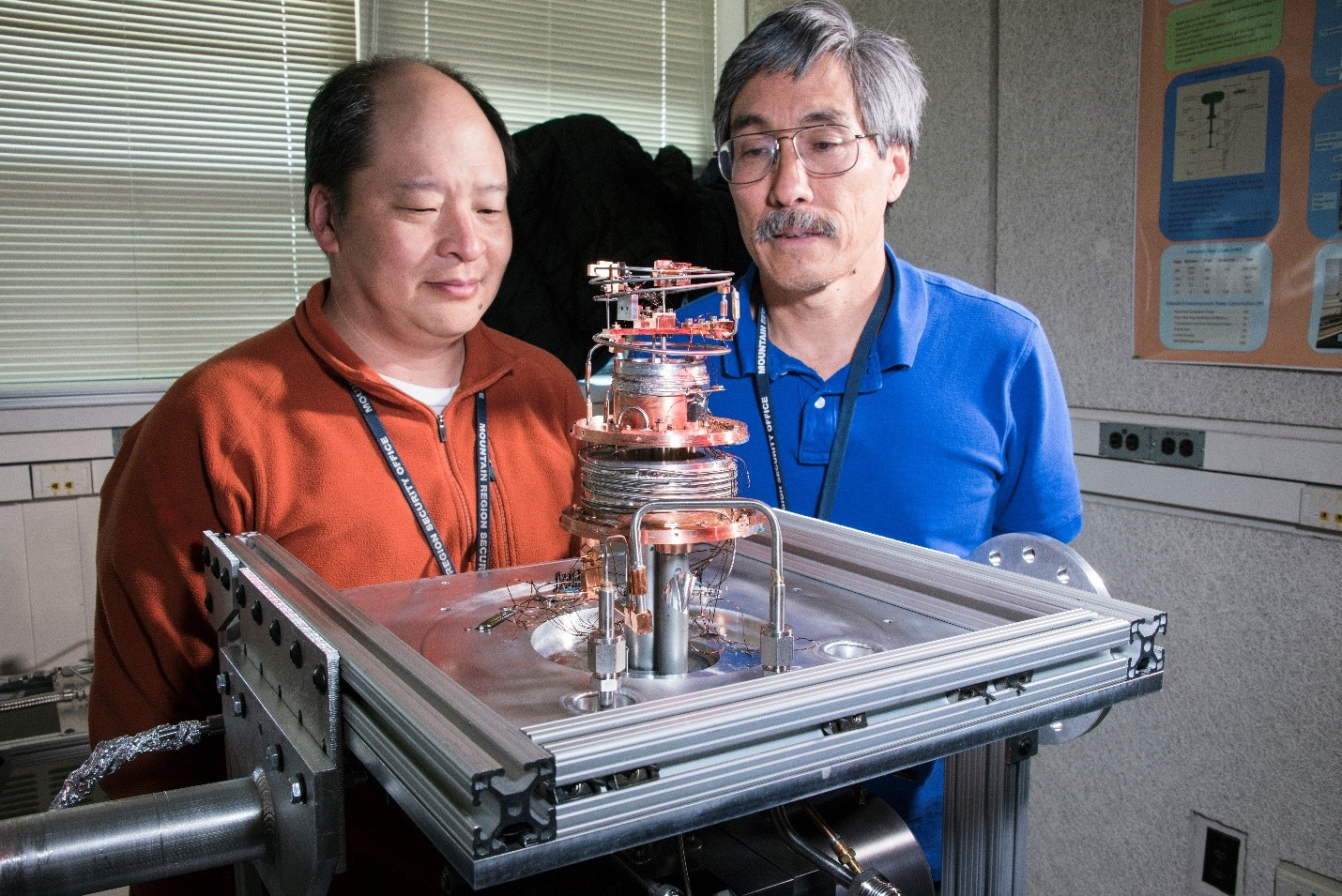|
scientists at the national institute of standards and technology (gaithersburg, md.) have created a novel, hybrid cooling system for superconducting nanowire single-photon detectors (snspd) that is smaller than any previous attempt and eliminates the need for conventional cryocoolers like liquid helium, according to an article on the nist website.

sae woo nam (left) and vincent kotsubo examine the prototype for their new cryocooler.
(national institute of standards and technology)
the article explained, “snspds are utilized in ultra-secure quantum communications, defect analysis of small-scale integrated circuits, laser-based light detection and ranging (lidar), and biological research, among many other applications…because they are based on superconducting materials, they operate at extremely low temperatures only a few kelvins above absolute zero.”
typically, to achieve that level of cooling, liquid-helium systems were required, but those can be costly, complicated, large, and require effort to operate and maintain, so nist studied alternatives.
“the team's prototype cooler, drive, control electronics and instrumentation is 0.31m high and 0.61 m long,” the article noted. “when all the engineering work is completed, the scientists believe that it will easily fit in a standard electronics rack. its power demand is about 250 watts.”
the new systems uses a joule-thomson cryocooler (jt) and a pulse-tube refrigerator (ptr) that work by alternately compressing and expanding a gas, which releases thermal energy to a heat exchanger that removes it from the completely closed system.
the article added, “the ptr can reach temperatures as low as 10 k. it is used to precool the jt, which can reach below 2 k. snspds have required operating temperatures in the 1 k – 2 k range.”
in order to complete the system, nist scientists had to custom-design each of the system’s parts, with the exception of the compressors. a michigan-based company, quantum opus, has signed an agreement with nist in hopes of commercializing the technology.
quantum opus founder aaron miller said in the article, “this will be the smallest, lowest-power continuously-operating cryogenic system capable of reaching less than 2 kelvins. ideally it could move experiments that usually would be tied to a high-voltage wall plug and water cooling system into more mobile environments such as aircraft and telecommunication data closets. as with many darpa projects, the applications are not fully known yet. but hopefully the existence of this system will get people interested in new applications previously thought impossible."
the research was recently published in ieee transactions on applied superconductivity. the abstract read:
“we are developing a compact, low-power, closed cycle cooling system for superconducting nanowire single photon detectors. the base temperature of the present prototype, which uses a helium-4 joule-thomson stage, is 2.2 k with over 1.2 mw of cooling.
“this stage is precooled to 10 k using a three-stage linear compressor pulse tube cooler. a fully optimized system is projected to consume less than 250 w of wall power, and fit within a standard fan-cooled equipment rack enclosure.
“to-date, the pulse tube coldhead, pulse tube compressor, joule-thomson expansion stage, and joule-thomson counterflow heat exchangers have been developed, and performance tests show that design goals have been met. substituting helium-3 for helium-4 should result in temperatures approaching 1 k.
“future work includes development of the joule-thomson compressor, drive and control electronics, and further optimization of the pulse tube and joule-thomson coldheads.”
|